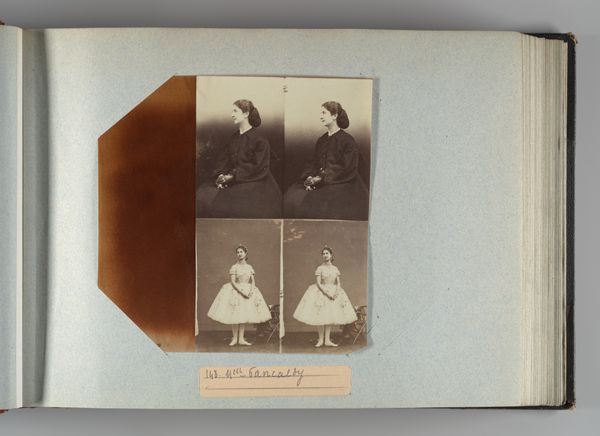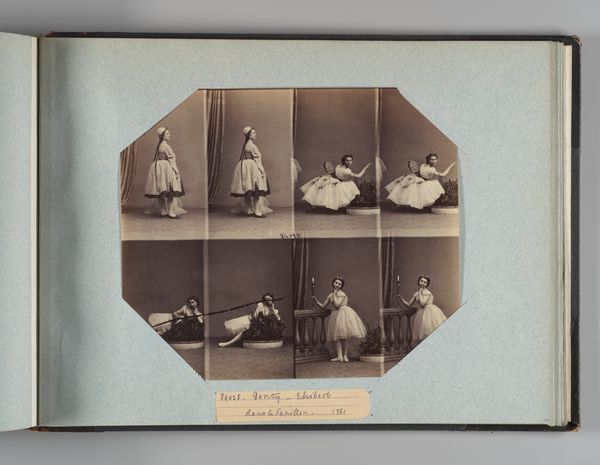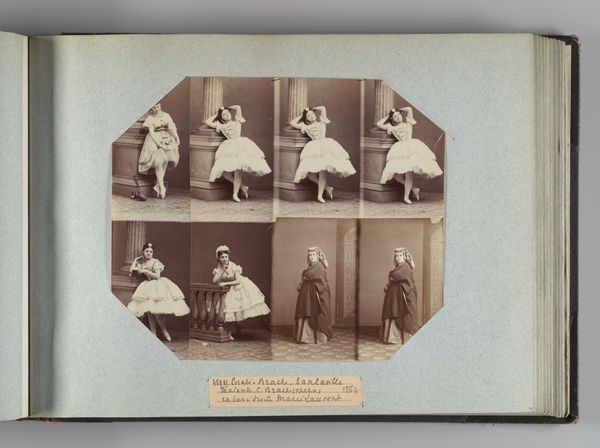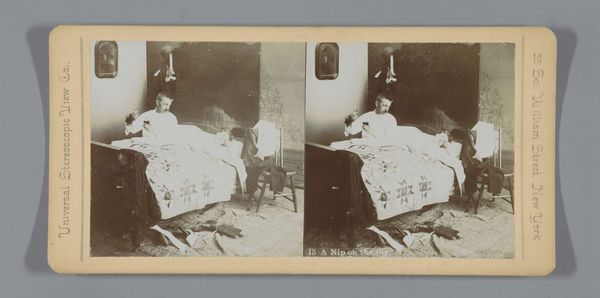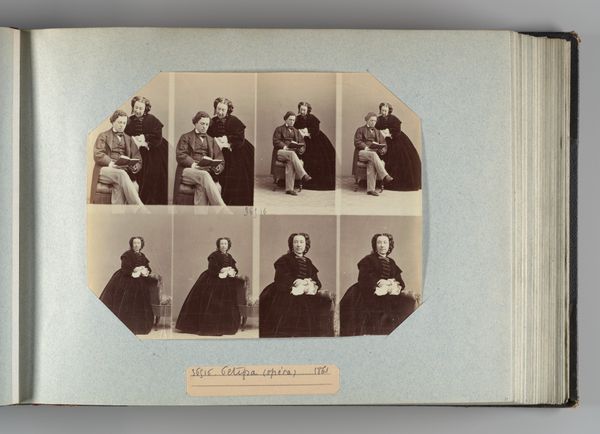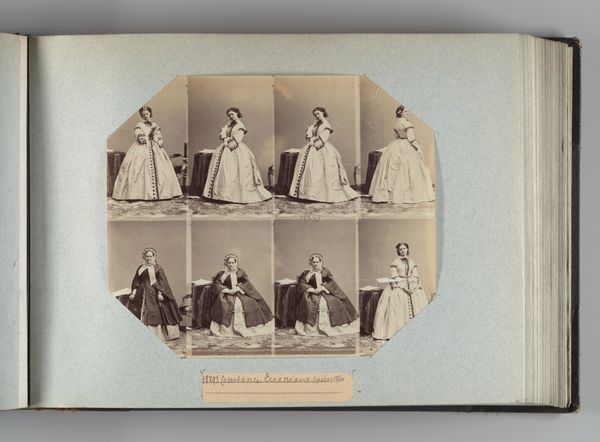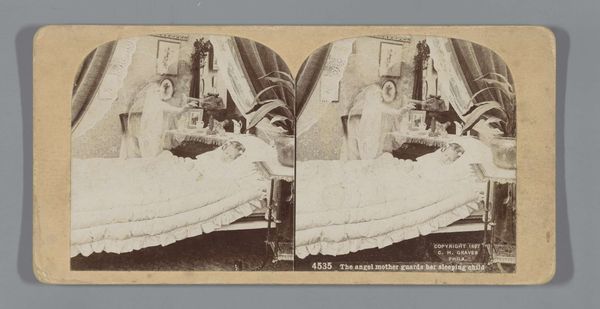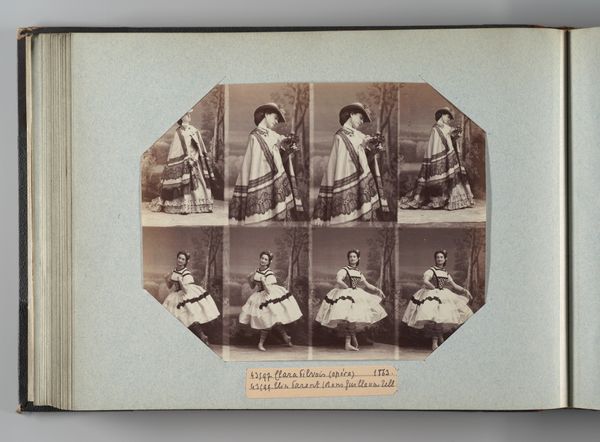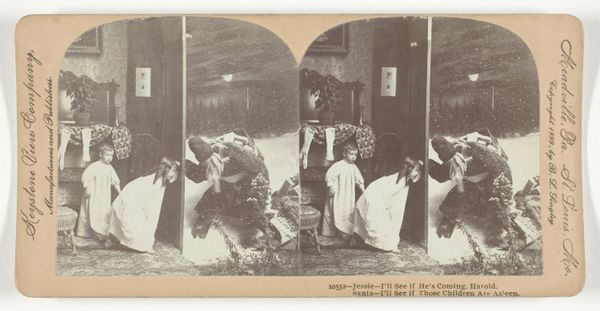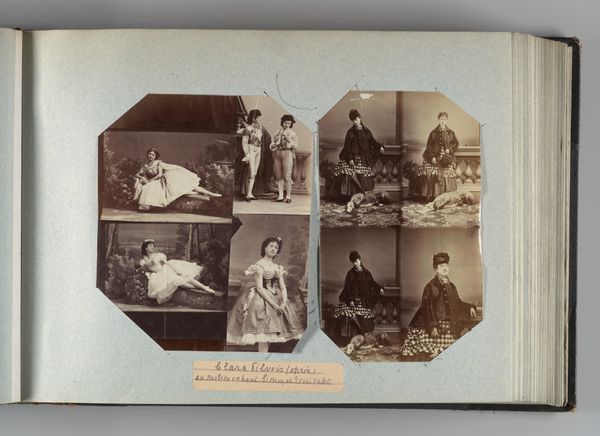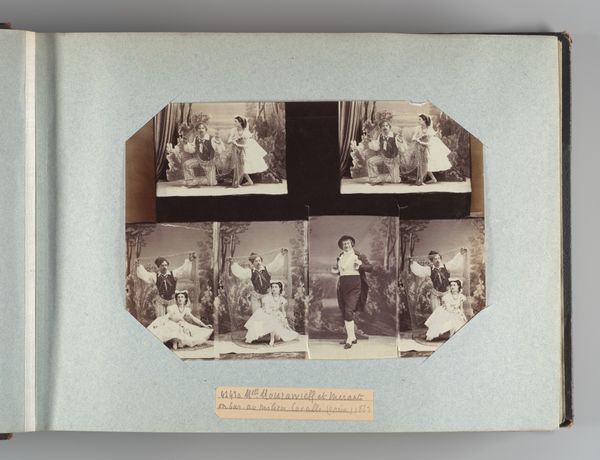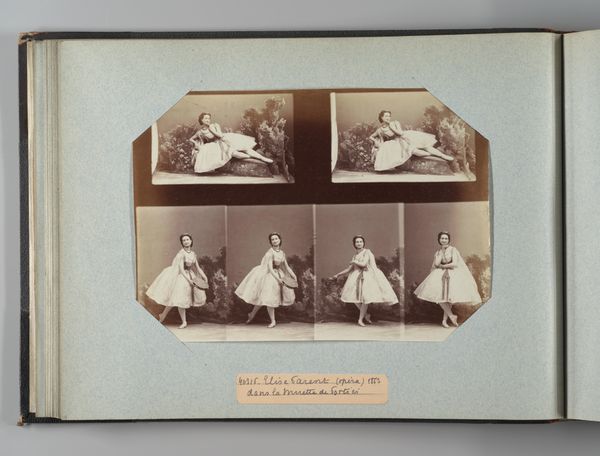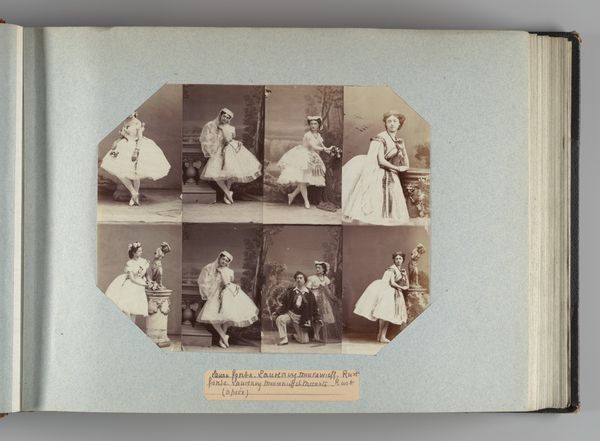
photography, photomontage, albumen-print
#
portrait
#
aged paper
#
paper non-digital material
#
paperlike
#
paper texture
#
photography
#
personal sketchbook
#
photomontage
#
genre-painting
#
albumen-print
Dimensions: Image: 7 3/8 × 9 1/4 in. (18.8 × 23.5 cm) Album page: 10 3/8 × 13 3/4 in. (26.3 × 35 cm)
Copyright: Public Domain
André-Adolphe-Eugène Disdéri's photograph album page captures Clara Pilvois in "le Diavolina," likely made in 1853. The visual echoes the nymphs and goddesses of classical antiquity. The ballerina's poses, both upright and reclining, draped in diaphanous fabric, recall the ancient motif of the Three Graces. This motif celebrates beauty, charm, and joy and is frequently seen in Roman frescoes as well as Renaissance paintings, from Raphael to Botticelli. Consider the symbolism of the garland worn in her hair. Such adornments link her to Flora, the Roman goddess of flowers and spring. The recurrence of these symbols in ballet serves as a powerful reminder of our collective memory. This is a collective unconscious projection of beauty and ethereal grace across time, evolving from sacred to secular, from religious rite to artistic expression. The classical motif finds a resurgence in 19th-century popular culture. The dancer's fleeting pose and the captured image itself suggest a connection to the ephemeral nature of performance and memory. It's a dance through time, where the past continues to inform the present.
Comments
No comments
Be the first to comment and join the conversation on the ultimate creative platform.
